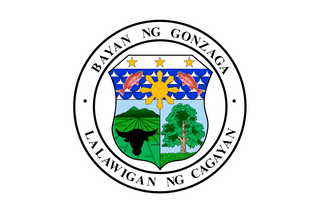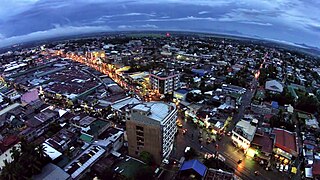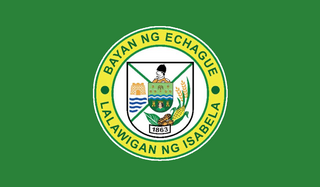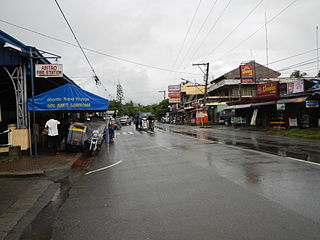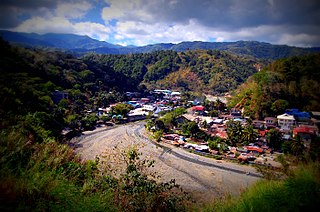This article needs additional citations for verification .(January 2014) |
Lal-lo Nueva Segovia | |
|---|---|
| Municipality of Lal-Lo | |
 Nueva Segovia Church | |
 Map of Cagayan with Lal-lo highlighted | |
Location within the Philippines | |
| Coordinates: 18°12′00″N121°39′44″E / 18.2°N 121.6622°E | |
| Country | Philippines |
| Region | Cagayan Valley |
| Province | Cagayan |
| District | 1st district |
| Barangays | 35 (see Barangays) |
| Government | |
| • Type | Sangguniang Bayan |
| • Mayor | Florence Oliver B. Pascual |
| • Vice Mayor | Maria Olivia B. Pascual |
| • Representative | Ramon C. Nolasco Jr. |
| • Electorate | 28,126 voters (2022) |
| Area | |
| • Total | 702.80 km2 (271.35 sq mi) |
| Elevation | 9.7 m (31.8 ft) |
| Highest elevation | 130 m (430 ft) |
| Lowest elevation | 0 m (0 ft) |
| Population (2020 census) [4] | |
| • Total | 48,733 |
| • Density | 69/km2 (180/sq mi) |
| • Households | 11,612 |
| Economy | |
| • Income class | 1st municipal income class |
| • Poverty incidence | 13.51 |
| • Revenue | ₱ 275.2 million (2020) |
| • Assets | ₱ 678.5 million (2020) |
| • Expenditure | ₱ 241.4 million (2020) |
| • Liabilities | ₱ 325.8 million (2020) |
| Service provider | |
| • Electricity | Cagayan 2 Electric Cooperative (CAGELCO 2) |
| Time zone | UTC+8 (PST) |
| ZIP code | 3509 |
| PSGC | |
| IDD : area code | +63 (0)78 |
| Native languages | Ilocano Ibanag Cagayan Agta Tagalog |
Lal-lo, officially the Municipality of Lal-Lo (Ibanag : Ili nat Lal-lo; Ilocano : Ili ti Lal-lo; Tagalog : Bayan ng Lal-lo), is a first class municipality in the province of Cagayan, Philippines. According to the 2020 census, it had a population of 48,733 people. [4]
Contents
- Etymology
- History
- Early history
- Spanish colonial era
- Contemporary
- Geography
- Barangays
- Climate
- Demographics
- Economy
- Government
- Local government
- Elected officials
- Education
- Media
- References
- External links
During the Spanish colonial period, Lal-lo was known as Ciudad de Nueva Segovia and was the seat of the Diocese of Nueva Segovia before it was moved to Vigan in Ilocos Sur. It is currently under efforts to regain its Spanish-era city status.
Recently,[ when? ] the provincial government of Cagayan through the leadership of Governor Manuel Mamba planned to make Lal-lo the provincial capital of Cagayan again. [6]
The Northern Cagayan International Airport in southern Lal-lo was constructed to support both the Cagayan Special Economic Zone in northern Cagayan and to serve seaborne traffic through Port Irene. The airport project involved the construction of a 2,200 metres (7,200 ft) runway with a width of 45 miles (72 km), following the standards of the International Civil Aviation Organization. The international airport accommodates large aircraft such as the Airbus A319-100 and Boeing regional jets of comparable size. Royal Air Philippines offers service twice weekly using BAe146 aircraft.[ citation needed ][ needs update ]
Lal-lo is 81 kilometres (50 mi) from Tuguegarao and 562 kilometres (349 mi) from Manila.










